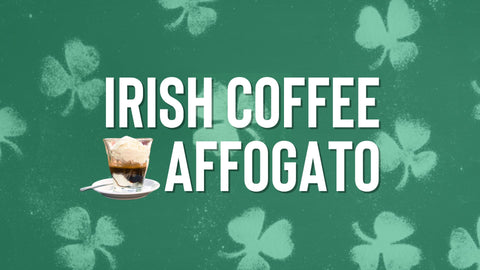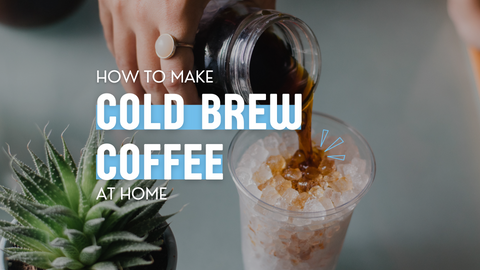
Table of Contents:
- Introduction
- What is Cold Brew Coffee?
- The Case for Cold Brew
- The Perfect Cold Brew Coffee Ratio
- What You’ll Need to Make Cold Brew Coffee at Home
- Step-by-Step Guide to Making Cold Brew Coffee
- Cold Brew Coffee Variations and Flavor Enhancements
- Ideas for Serving and Enjoying Your Cold Brew
- Cold Brew Coffee Storage Tips
- How Much Money Can You Saving Brewing Cold Brew at Home?
- Final Thoughts
Welcome to our guide to making cold brew coffee at home! Whether you're new to making cold brew at home or a seasoned enthusiast looking for a new twist, this guide will equip you with the knowledge and know-how to craft the perfect cold brew coffee at home.
What is Cold Brew Coffee?
Before we get into the brewing process, let's first understand what sets cold brew coffee apart. You may be wondering: is cold brew just a fancier name for iced coffee? The answer is no!
Cold brew refers to the brewing process or how the coffee is made. The different brewing methods result in different flavors and textures.
Iced coffee is typically brewed hot, using traditional methods like pour-over or drip, then immediately cooled down by pouring over ice. This rapid cooling process locks in the flavors and aromas while keeping the acidity of the coffee.
On the other hand, cold brew involves steeping coarsely ground coffee beans in cold water for an extended period, usually 12 to 24 hours.
This slow extraction process produces a smoother, less acidic brew with a subtle sweetness. The longer steeping time allows for a more nuanced flavor profile to develop.
The Case for Cold Brew:
There are several reasons why cold brew has become increasingly popular to make at home. From its lower acidity to its versatility in flavor, here are some of the benefits to brewing cold brew style coffee at home:
- smooth, low-acidic taste
- highlights natural sweetness of coffee beans
- minimizes bitterness
- can be brewed concentrated for versatility and customization
- longer shelf life when refrigerated
- convenient for batch preparation
The Perfect Cold Brew Coffee Ratio
Finding your preferred balance of coffee to water (and milk/sweetener) is key to making the perfect cold brew. Everyone’s palette is subjective, but the great thing about cold brew is when it's brewed as a concentrate, it can easily be diluted to suit your desired strength preference.
What You’ll Need to Make Cold Brew Coffee at Home
Making cold brew coffee at home can be as simple as using a jar (like a mason jar), strainer, coarsely ground coffee, and water.
A French Press is also a great device for getting started making cold brew at home.
There are also various cold brew makers on the markets, we recommend the Bodum 12 Cup Cold Brew Maker if you’re wanting to brew large batches of cold brew at home.
Step-by-Step Guide to Making Cold Brew Coffee
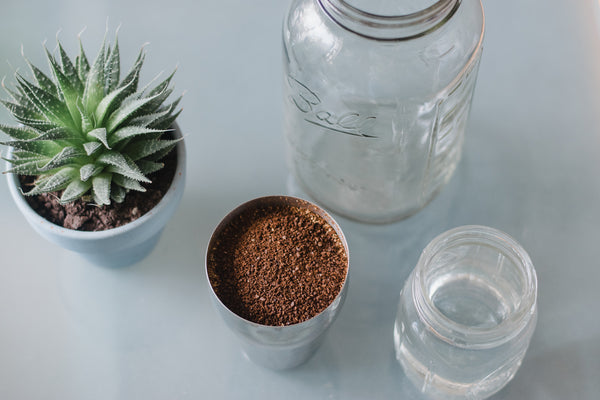
Method 1: Using a Mason Jar and Strainer
Ingredients:
- Coarsely ground cold brew coffee beans
- Cold water
Equipment:
- Mason jar (or any large container with a lid)
- Fine-mesh sieve
- Coffee filter (optional)
- Spoon
Instructions:
- Measure the Coffee: In a 1-quart mason jar, add 1 cup of coarsely ground coffee beans (about 113 grams).
- Add Water: Pour 4 cups of cold or room temperature water into the mason jar. Stir gently with a spoon to mix to ensure all the coffee grounds are fully saturated
- Steep: Seal the mason jar with a lid and let it steep at room temperature for 12 to 24 hours. The longer the steeping time, the stronger the cold brew will be.
- Strain: After steeping, place a fine-mesh sieve over another container. Pour the cold brew slowly through the sieve to separate the coffee grounds from the liquid. If desired, use a coffee filter for a finer strain.
- Store: Transfer the strained cold brew concentrate into a clean container or bottle. Store it in the refrigerator for up to 2 weeks.
- Serve: To enjoy, dilute the cold brew concentrate with water, milk, or your preferred liquid to your desired strength. Add ice cubes and milk/sweetener if desired and enjoy!
Method 2: Using a French Press or Cold Brew Maker
Ingredients:
- Coarsely ground cold brew coffee beans
- Cold water
Equipment:
- French press or cold brew maker
- Spoon
Instructions:
- Measure the Coffee: Add coarsely ground coffee beans to your French press or cold brew maker. For a 32-ounce French press, you can use around 1 cup of coffee grounds (about 113 grams).
- Add Water: Pour cold water over the coffee grounds in the French press or cold brew maker. Use approximately 4 cups of water for the 1-cup coffee ground measurement.
- Stir: Gently stir the mixture with a spoon to ensure all the coffee grounds are fully saturated.
- Steep: Place the plunger lid on the French press or cover the cold brew maker. Let it steep in the refrigerator for 12 to 24 hours.
- Press or Strain: After steeping, slowly press down the plunger on the French press to separate the coffee grounds from the liquid. If using a cold brew maker, follow the manufacturer's instructions for straining.
- Store: Transfer the cold brew concentrate into a clean container, bottle, or pitcher for easy pouring. Store it in the refrigerator for up to 2 weeks.
- Serve: To enjoy, dilute the cold brew concentrate with water, milk, or your preferred liquid to your desired strength. Pour over ice cubes if desired and savor the refreshing taste of homemade cold brew!
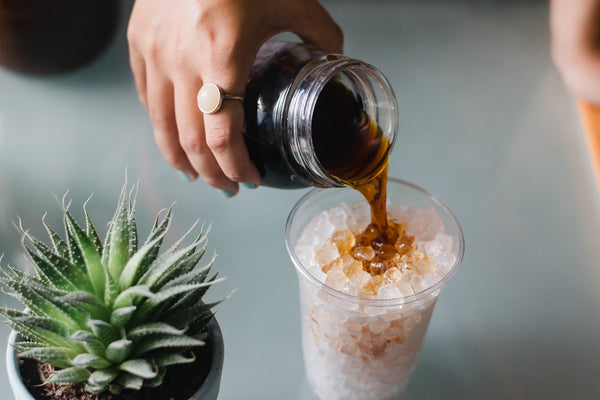
Cold Brew Coffee Variations and Flavor Enhancements
Cold brew variations are a fun and creative way to enhance the flavor of your cold brew naturally.
Common flavor variations include adding spices like cinnamon, cardamom, or vanilla pods during the steeping process to infuse the cold brew with warm, aromatic notes.
For sweetness, you can add flavored syrups such as caramel or hazelnut (or countless other flavors) to customize the taste profile. We recommend using liquid sweeteners when making cold coffee drinks at home as non-liquid sweeteners (like sugar) tend to not fully break down and incorporate as well in cold liquids as the do in hot ones.
Additionally, experimenting with different types of milk or alternative dairy-free options like almond or oat milk can impart creaminess and depth to the cold brew.
For a refreshing twist, consider adding citrus zest or fruit slices to infuse your cold brew with bright, fruity undertones.
With endless possibilities for customization, you can create endless, flavorful cold brew coffee concoctions to enjoy year-round.
Ideas for Serving and Enjoying Your Cold Brew at Home
One of our favorite tips for making cold brew coffee at home is coffee ice! Simply use cold brew (or even left over coffee) to fill ice molds and make coffee ice. Coffee ice is a great way to keep your cold brew cold without it getting watered down as it melts.
Another recommendation is serving your cold brew using a stainless steel, insulated tumbler or glass. Not only does this cut down plastic use and microplastic contamination, but it will help keep your cold brew colder longer as you sip and enjoy.
Cold Brew Coffee Storage Tips
Proper storage is key to maintaining the freshness and quality of your cold brew. Once you've brewed your cold brew concentrate, transfer it into a clean, airtight container, bottle, or pitcher.
Store the container in the refrigerator to keep the cold brew chilled and prevent it from spoiling. It's important to keep the cold brew away from strong-smelling foods or odors in the fridge to avoid any flavor contamination.
Cold brew, like any perishable food or beverage, can go bad if not stored properly or if it's kept for too long. Here are some signs to look out for to determine if your cold brew has gone bad:
UNPLEASANT ODOR: If your cold brew develops a sour or rancid smell, it's a clear indicator that it has spoiled. Fresh cold brew should have a clean, coffee-like aroma.
STRANGE APPEARANCE: Inspect the appearance of your cold brew. If you notice any mold, discoloration, or cloudiness in the liquid, it's best to discard it. Fresh cold brew should be clear and free from any visible contaminants.
OFF TAST: Taste a small amount of the cold brew. If it tastes noticeably different from when it was freshly brewed, with a sour or off-putting flavor, it's likely gone bad and should not be consumed.
EXCESSIVE BITTERNESS: While cold brew is known for its smooth flavor, excessive bitterness can indicate that it's past its prime. Over time, cold brew can become overly bitter as it oxidizes.
If you observe any of these signs, it's safest to err on the side of caution and discard the cold brew to avoid any potential health risks associated with consuming spoiled beverages.
Always prioritize freshness and proper storage to maximize the shelf life of your cold brew. That shouldn’t be an issue though since you’ll be brewing cold brew so good, you’ll have no problem with it hanging around long enough to expire, right?
How Much Money Can You Saving Brewing Cold Brew at Home?
Have you ever done the math on how much money you save brewing coffee at home? It's a lot! While we 100% advocate getting out and supporting local coffee shops all you can (they provide a wonderful service of brewing coffee and community), we understand that’s not necessarily practical to do every day.
Here’s a quick rundown of how much money you save brewing cold brew coffee at home:
☕ A 2lb bag of cold brew beans produces roughly 256 ounces of cold brew
🔁 A monthly subscription for a 2lb bag of beans costs $23.75
🛍️ The cost of buying cold brew at a coffee shop is usually at least $4 per drink before adding flavor and milk
| Homemade Cold Brew | Buying at Coffee Shop | Total Savings | |
|---|---|---|---|
| Cost per cup (8oz) | $0.74 | $4.00 | $3.26 |
| 30 day supply | $22.20 | $120 | $97.80 |
| 365 day supply | $270.10 | $1,460 | $1,189.9 |
Final Thoughts:
Give it a try and let us know how it goes! We hope this helps you brew better cold brew at home. Cheers to enjoying refreshing and flavorful cold brew coffee whenever the craving strikes!
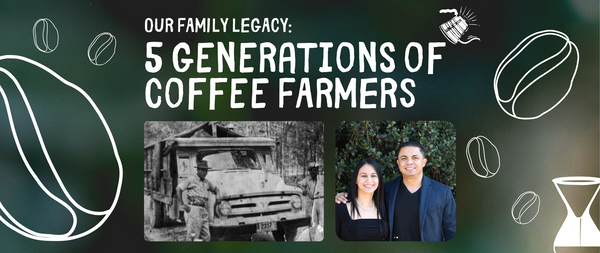
🫂 WHO ARE WE?
Five Star Coffee Roasters exists to disrupt the coffee supply-chain across countries and cultures by supplying relationship-based coffee. We empower coffee drinkers, coffee farmers, and their communities.
We do this by expertly roasting and directly sourcing coffee from our family farms in Honduras as well as partnering with other coffee producing families around the world. We believe good coffee starts at origin and hope you'll notice the Five Star difference.

